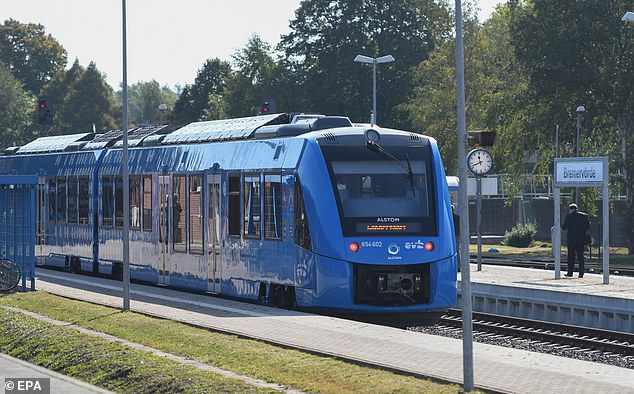Germany: Fleet of hydrogen-powered passenger trains
Germany recently launched the world’s first fleet of hydrogen-powered passenger trains to replace 15 diesel trains running on non-electrified tracks in the state of Lower Saxony.
Key Points
- The new trains are equipped with a hydrogen tank and fuel cells on the roof and will produce electricity by combining water and hydrogen. The company revealed that the excess energy produced will be stored in ion-lithium batteries.
- The estimated cost of this project is around 93-million-euro (USD 92 million).
- These bright blue Coradia iLint trains are built by French TGV-maker Alstom, which are costlier than diesel powered trains but eco-friendly.
- The green trains can travel 600 miles (1,000km) and a maximum speed of 140 kph (87 mph) on a single tank of hydrogen, similar to the range of diesel trains.
Hydrogen trains
- Hydrogen trains are equipped with fuel cells that produce electricity by combining hydrogen with oxygen. This conversion process only emits steam and water, thus producing zero emissions. Excess energy produced is stored in ion-lithium batteries on board train.
- These trains also make very little noise. Moreover, hydrogen fuel cells have advantages over batteries. Instead of recharging, they can easily be refueled like gas or diesel engine.
- It is also easier to build refueling infrastructure for these trains at railway stations.
- These trains can run for around 1,000 km on a single tank of hydrogen, similar to the range of diesel trains.
- These trains offer attractive prospect to many cities scrambling to combat air pollution. The only disadvantage these hydrogen trains is that they are more expensive than fossil fuel-based trains.
Month: Current Affairs - August, 2022
Category: International / World Current Affairs • Science & Technology Current Affairs


